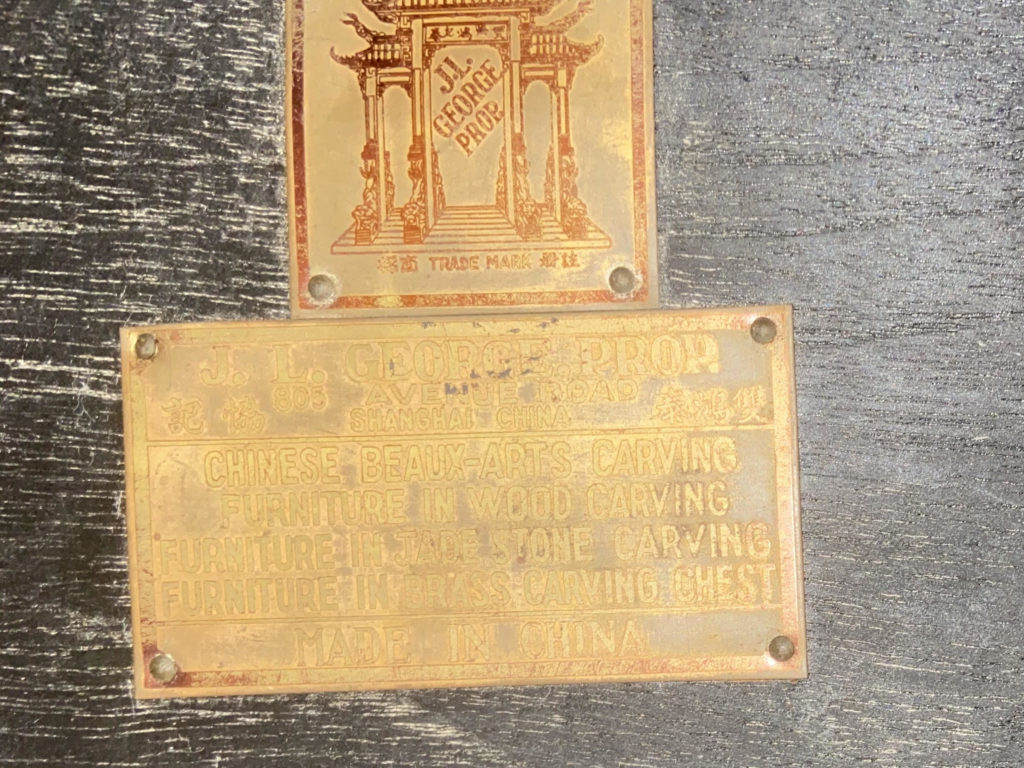JL George – Shanghai Beaux-Arts Furniture
Posted: November 10th, 2021 | 2 Comments »I’ve posted previously on Shanghai furniture maker (and after 1949 Hong Kong based) JL George (click here and here). One thing that interests me and, perhaps, makes us think slightly differently of inter-war Shanghai is the early 1920s, early 1930s JL George official stamp. It hopefully makes us think a little bit more about the longer term influences of European modernism on Shanghai and helps challenge the cult of the art-deco in Shanghai.
What I refer to as Shanghai’s ‘cult of art-deco’ is the tendancy by commentators to refer to everything – architecture as well as furniture and interiors – as art-deco. This accentuates the idea of Shanghai as an art-deco city but minimises the broader, and longer trends of colonial-comprador, classical, neo-classicial, modernist, streamline-moderne as well as Mock Tudor, Queene Anne, Moorish, Mediterranean etc alongside unique Shanghai forms of the shikumen and lilong.
The JL George stamp below, to be found on all their pieces of Shanghai-made furniture specifically mentions ‘Chinese Beaux-Arts Carving’. You won’t come across this a lot on the plethora of blog posts, magazine articles and books on Shanghai, due largely to the Cult of Art-Deco that has latterly pervaded the city. What the JL George stamp shows is that earlier and longer running modernist trends were also important in Shanghai and show a longer and deeper trend of modernism in the treaty port.

Mr. George was reportedly raised in a Catholic orphanage in Shanghai. When his superb talents surfaced he was sent to Paris to study at Beaux Arts. With the fall of Shanghai to the Japanese imminent in 1937 he was selected to move Chinese art treasures to Taiwan. Do you have any idea where his furniture can be located and their current values?
Thanks – the oraphange and Beaux arts in paris makes sense but i think some confusion on dates after – due to the Japanese incursion into Manchruia much Chinese art from Feking and the north was moved to Shanghai in the mid-1930s, and then to Nanjing in 37. The move to Taiwan was 49 – George moved to HK in 49 too. This would make more sense as Taiwan was Japanese-controlled in 1937.